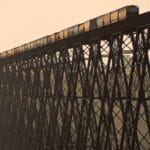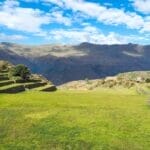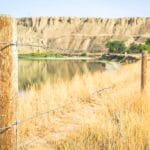Dear reader: This article contains links to products and services that I may be compensated for, at no extra cost to you.
The Sacred Valley (el Valle Sagrada) is my favorite place in Peru. It is home to fantastic ruins, the starting point of the Inca Trail to Machu Picchu, traditional Quechua villages and markets, incredible restaurants, and adventure activities galore.
The Sacred Valley is formed by the Urubamba River north of Cusco, which wraps around Machu Picchu before flowing on to the Amazon. It is a fertile region that was home to many civilizations before the Incas took over.
Although many visitors whizz through the Sacred Valley on a single day tour, I strongly recommend spending more time there (I spent nearly two weeks in the valley and easily could have stayed longer!) It’s a better place to acclimatize than Cusco because it is lower in elevation and much easier to handle that the bustling former Inca capital.
In this post, I’ll try to convince you with 30 fun things to do in the Sacred Valley. Use Pisac, Ollantaytambo, and/or Maras as a base for exploring this extremely rewarding region!
Table of Contents
Sacred Valley Tours
The best way to see the top sights in the Sacred Valley in a short period of time is by doing a Sacred Valley day tour like this one or this one. It’s also possible to combine your Machu Picchu visit and Sacred Valley tour in a two-day deal like this.
I don’t personally recommend this because I love the Sacred Valley so much and feel it deserves much more time in your itinerary.
Four ruins in the Sacred Valley are included on your Cusco Tourist Pass (Boleto Turistico). You must have the pass in order to visit them. Learn how the pass works in my Cusco Tourist Pass guide.
Where to Stay in the Sacred Valley
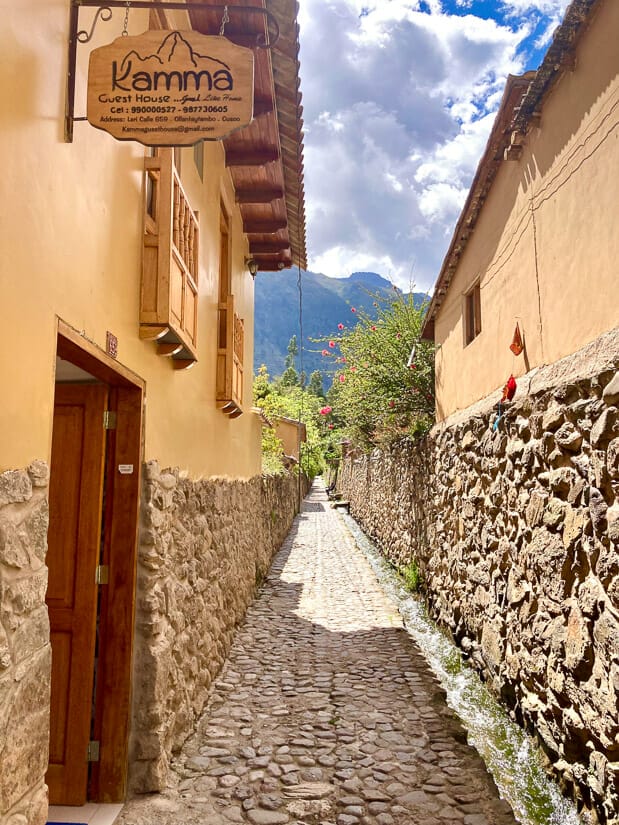
Rather than doing a whirlwind tour of the Sacred Valley in a single day, I highly recommend staying in the valley for as many days as your schedule allows. You won’t regret it!
If you choose only one place to stay in the Sacred Valley, make it Ollantaytambo. I absolutely fell in love with this living Inca town.
I can’t recommend Kamma Guesthouse (see on Booking / Agoda / TripAdvisor) enough. Run by two extremely helpful local women, it has rooftop views of both ruins in Ollantaytambo. It’s located in the original Inca part of town right next to the entrance to the Pinkuylluna hike.
Another amazing stay I had was at remote Mountain View Maras (only possible to book via Instagram), near Moray ruins and Maras Salt Mines. There are reside llamas, an incredible restaurant and bar, and unbeatable views from A-frame cabins, some of which have hot tubs.
Last but not least, consider staying in Pisac for a while. I actually started my trip there, because it is closest to Cusco but lower in altitude. I stayed at Wolf Totel Guesthouse (see on Booking / Agoda / TripAdvisor), a unique accommodation with a quirky owner and a small pool overlooking the countryside, but it was a little ways out of town and you may not love all the rules. In town, many people recommend Pisac Inn (see on Booking / Agoda / TripAdvisor).
Sacred Valley Things to Do
I’ve arranged the following Sacred Valley attractions roughly from east to west, or in the order you might encounter them if traveling from Cusco.
Meet Animals at Cochahuasi Sanctuary
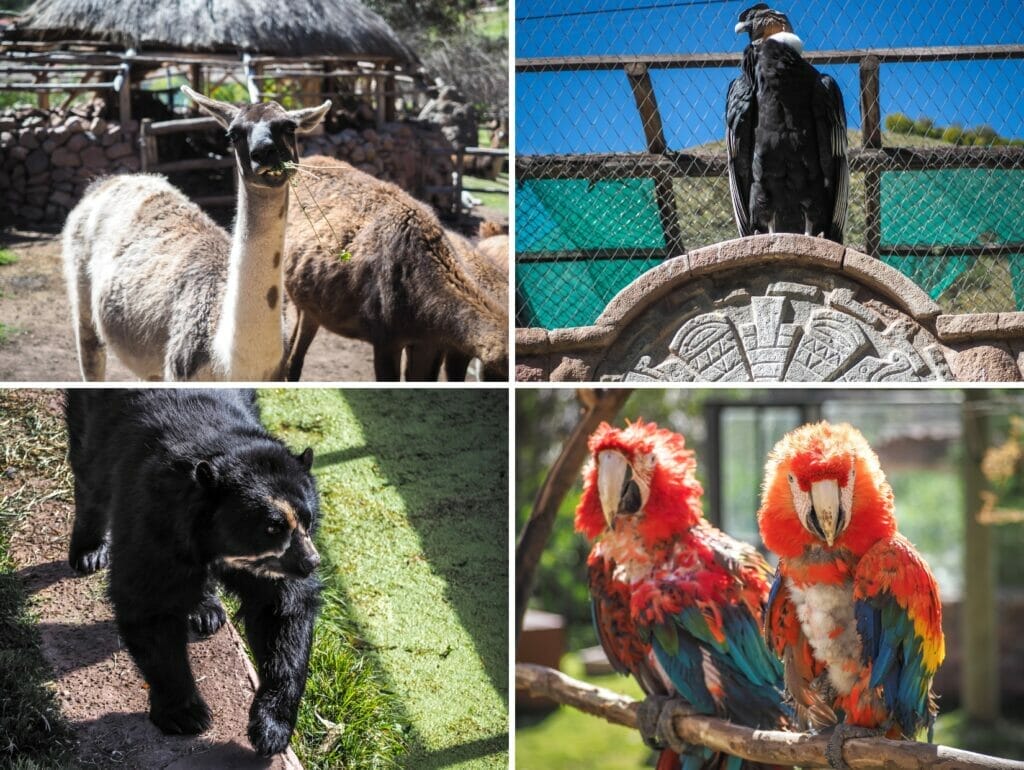
Cochahuasi Animal Sanctuary is a little more than halfway between Cusco and Pisac. Technically, that means it’s not quite in the Sacred Valley but on the highland between Cusco and the Sacred Valley.
This is a legit animal rescue sanctuary. There I saw Andean black bears, parrots, coati, a puma, and a small mountain cat. I got to snuggle llamas and alpacas and watch a condor fly right over my head (they are even bigger than I imagined!)
There’s an entrance fee of 20 soles. You can get there by bus or colectivo from Cusco or Pisac, or take a tour there.
Learn about Weaving at Awana Kancha
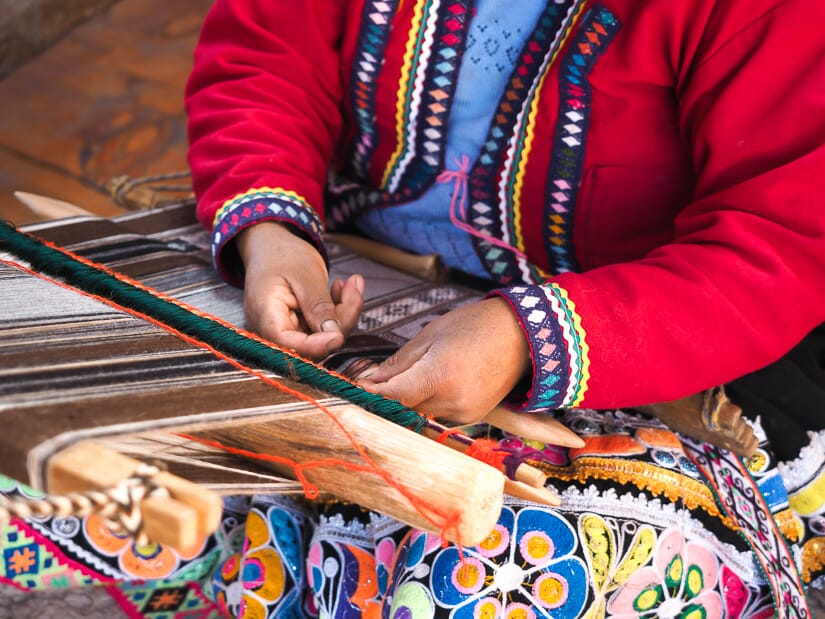
Just one minute’s drive past Cochahuashi is Awana Kancha, a traditional weaving center. There I saw all four of Peru’s camelids (llamas, alpacas, vicuñas, and guanacos).
I also got to see a short weaving demonstration and learn about the weaving process. The shop’s textiles are pricey but high quality. (Note: the weaving demonstration I saw in the weaving town of Chinchero was much better – we’ll get to that below.)
Entrance is free but demonstrations are by donation. You can get there by bus or colectivo from Cusco or Pisac. Sacred Valley tours like this one include a stop there. Note that there’s another similar center closer to Cusco called Manos de la Comunidad. See my Cusco guide for the details.
Take in the View from Mirador Taray
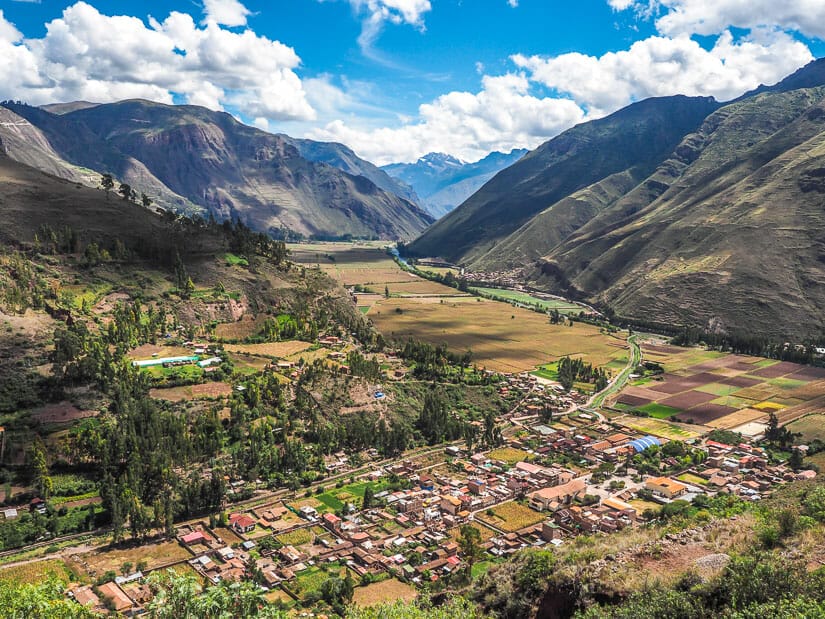
Just as the Cusco-Pisac highway begins descending into the Sacred Valley, there’s a commanding viewpoint on the left called Mirador Taray.
The viewpoint looks over the village of Taray, with quintessential Sacred Valley scenery. There’s also a statue and a few vendors.
If you’ve got a driver, ask them to stop for a few minutes. You can also take a bus or colectivo there.
I actually visited these first three sights in a half-day trip from Pisac. From Pisac, I caught a colectivo to Cochahuasi, then walked all the way back to Pisac via Awana Kancha and Mirador Taray. The walk took two hours, with incredible views along the way.
Chill out in Pisac
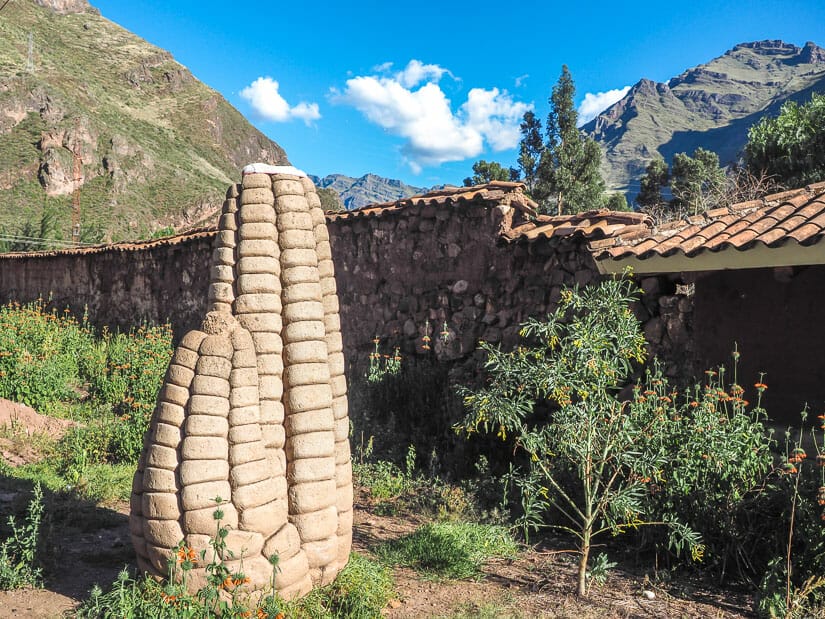
Pisac is the closest Sacred Valley town to Cusco. Because of this and its lower elevation, it is a great choice for acclimatizing when you first arrive in the region.
Pisac has a hippie or New Age vibe going on. Expect lots of vegan restaurants, ayahuasca retreats, tantric massage classes, meditation, and so on. Learn about these and other things to do in Pisac.
The hostels and guesthouses in the lovely rural area just east of town are a focal point for visitors interested in the above. There you’ll also find Dona Clorinda restaurant, one of the best local restaurants in Pisac.
Shop with the Locals at Pisac Sunday Market
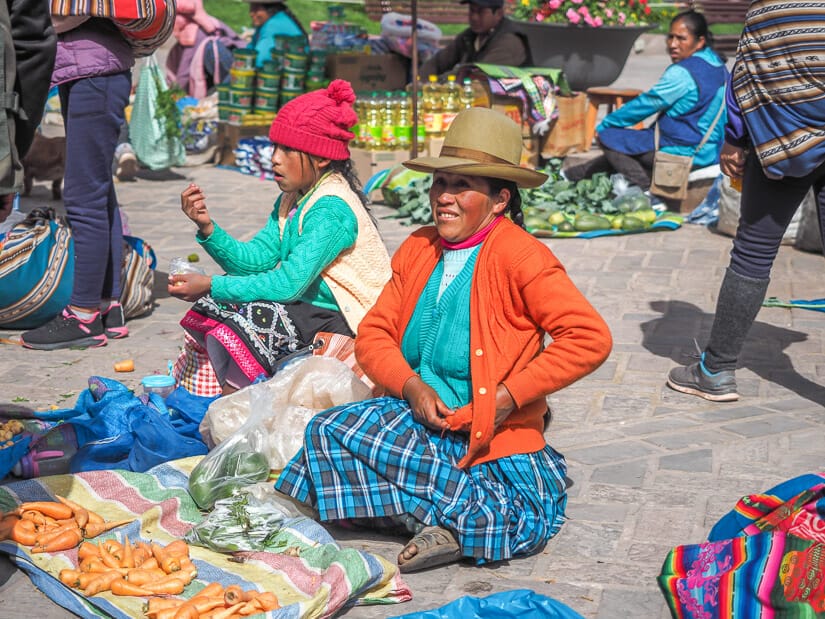
Pisac has long been known for its Sunday Market, though the market is not as big as it used to be.
This traditional market takes place in the morning and afternoon main plaza. It attracts local Quechua people from the surrounding villages, who come to buy fruits, veggies, Andean cheese, and so on.
A highlight is when mass ends in the adjacent church and colorfully dressed Quechua people spill out into the plaza. When I visited, this happened at 12:20 PM. Also on Sunday, check out the Sacred Sushi & Curry Sunday – learn more in my guide to Pisac’s best restaurants.
Be Blown away by Pisac Ruins
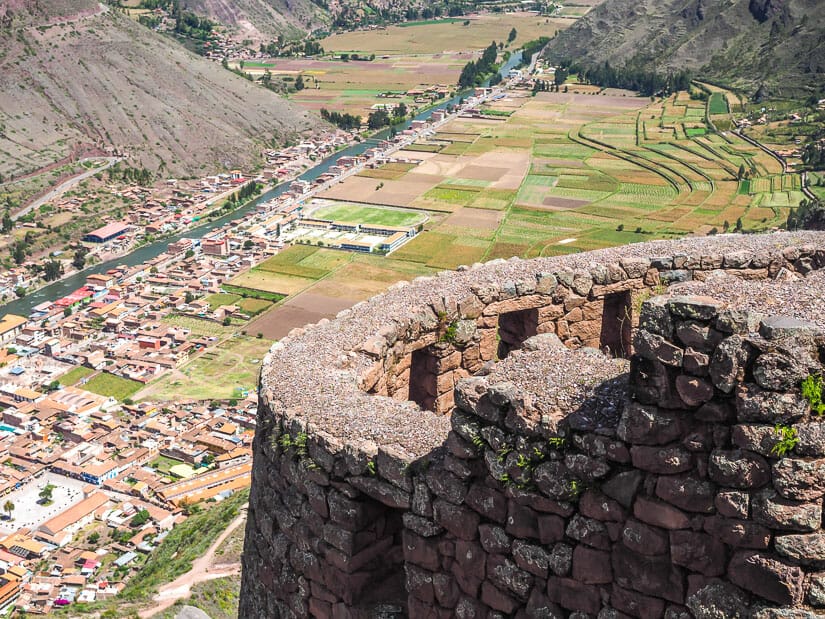
The Pisac archaeological site is one of the most impressive and significant ruins in the Cusco region. I was blown around by the sheer number of terraces (around 500!) and incredible mountain scenery at the ruins.
Pisac ruins lie mostly concealed on a mountaintop above town. You can visit the site as either a shorter loop (1-2 hours), or by walking from the ruins all the way back to town (3-4 hours), which allows you to see more of the site.
Learn how to do either in my guide to visiting Pisac ruins. You’ll need a Cusco Tourist Pass for visiting these ruins.
Hike to Remote Huchuy Qosqo Ruins
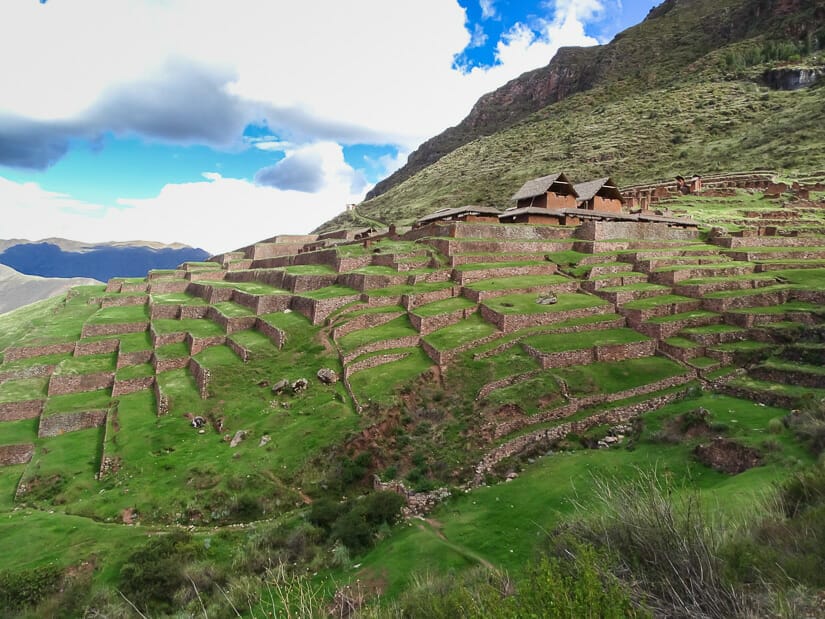
Huchuy Qosqo is one of the largest, most important, but also most difficult-toreach ruins in the Sacred Valley.
While the ruins are relatively close to the Sacred Valley town of Lamay, as the bird flies, you’ll have to walk several hours up a very steep valley wall to reach them. A longer but less steep option is to hike in from Chinchero in the next valley over (see below) or all the way from Cusco.
If you make the journey, there’s a good chance you’ll be the only one there.
Visit Museo Inkariy, the Best Inca Museum
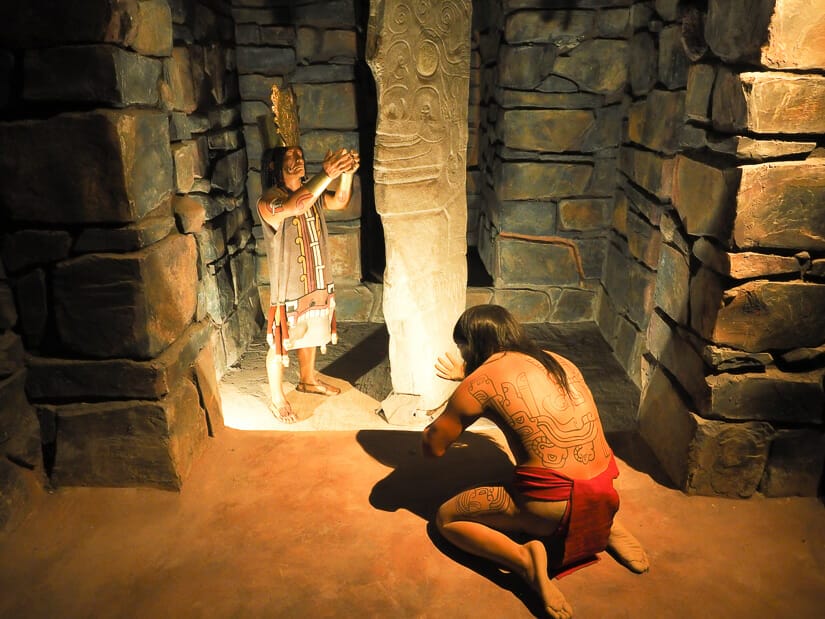
Despite the sheer number of museums in Cusco, I actually had my best museum experience at Museo Inkariy in the Sacred Valley.
This museums cover eight ancient Peruvian civilizations, including the Incas and seven before them. There are two rooms dedicated to each one: the first one with artifacts and info, and the second with dramatic life-sized scenes from the period.
The museum had Indiana Jones vibes. It was fun but also super informative. I learned much more than in any other museum in the region (learn about them all in my guide to Cusco’s best museums).
Unfortunately, the museum is a little hard to reach. It’s between the Sacred Valley towns of Huycho and Calca. You could stop there when traveling between Pisac and Ollantaytambo or as a half-day trip from Pisac like I did. It’s also included on this tour.
Meet a Famous Potter at Ceramicas Seminario
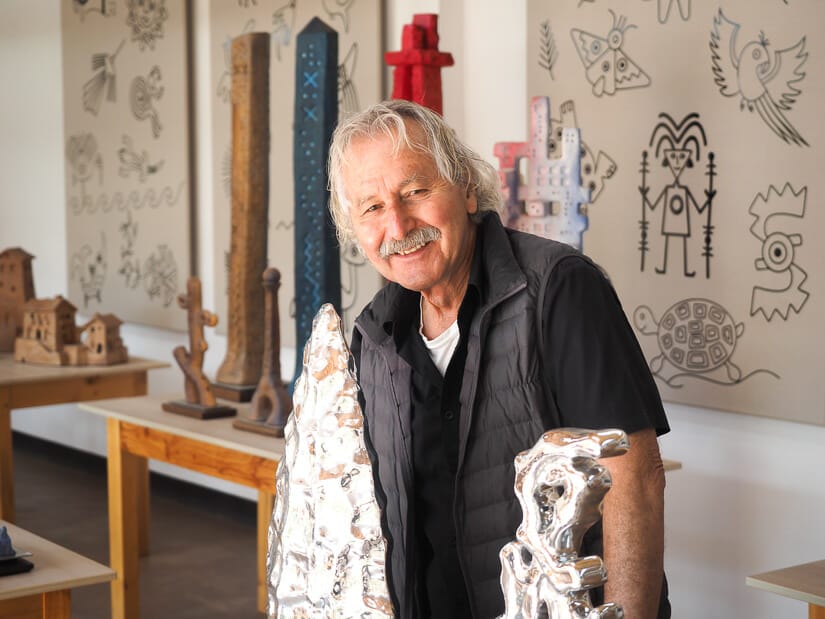
There isn’t a whole lot to see and do in Urubamba, the largest town in the Sacred Valley. However, I did stop there for an hour to visit the excellent Ceramicas Seminario.
This is the workshop of Pablo Seminario and his wife Marilú Behar. Seminario is world-famous for its modern ceramics made with ancient indigenous techniques. He uses red soil mostly from the Nazca region.
The workshop is about halfway between the spot where colectivos from Pisac drop you off in Urubamba and the station where they depart for Ollantaytambo.
Learn about Weaving in Chinchero
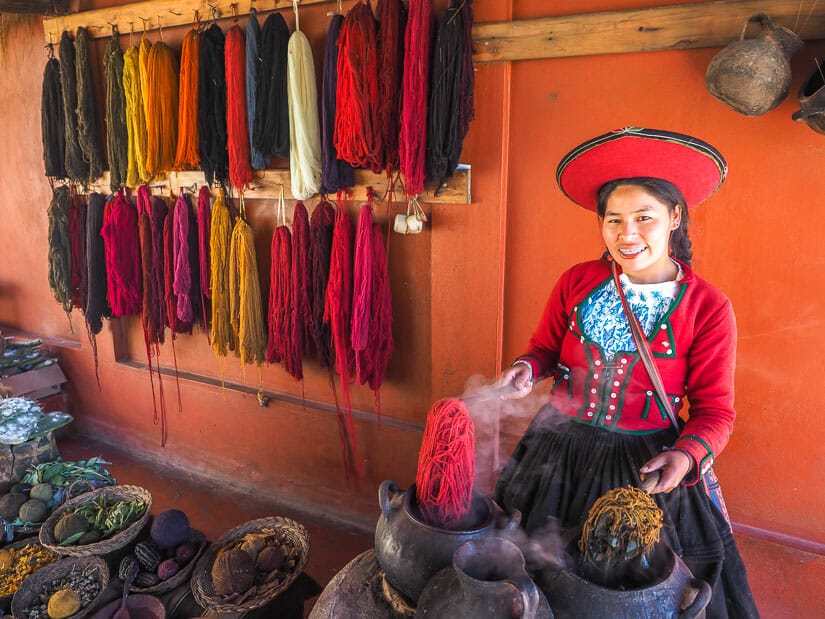
Chinchero is the weaving capital of the Cusco region. There are several weaving centers in this small, traditional village. I visited this one and it the demonstration was excellent. It took around 30 minutes and was very thorough.
A donation is expected, or it is waived if you buy something (I bought several items there). Tours such as this one include a stop at a weaving center in Chinchero.
The Peruvian government is currently constructing a new Cusco airport near Chinchero, which may threaten the traditional nature of this lovely little town. Also note that Chinchero is even higher in elevation (3762 m / 12,343 ft) than Cusco, so don’t go here until you are acclimatized.
Marvel at Chinchero Ruins
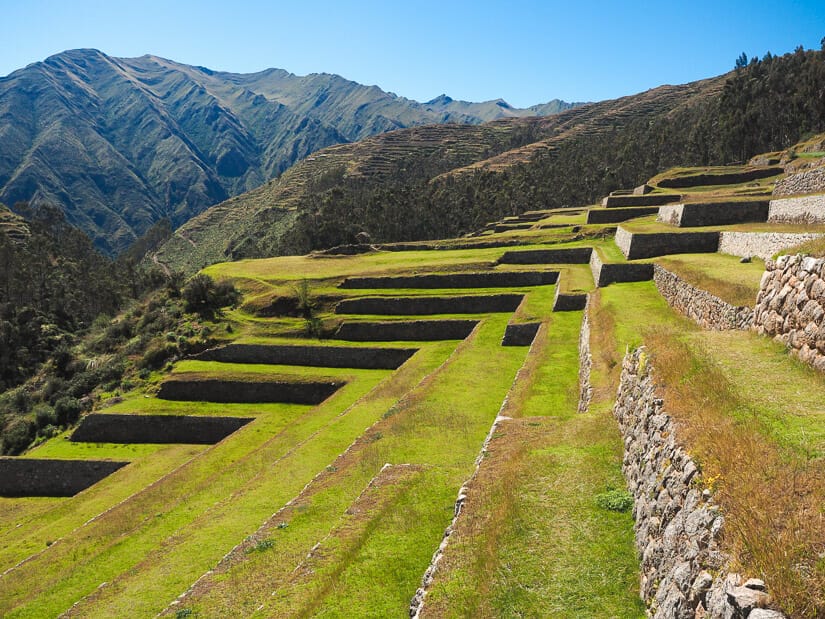
Chinchero is also the location of the Chinchero archaeological site. Archaeologists believe the site was a countryside resort of Inca Tupac Yupanqui, the son of Pachacutec.
Arriving at the site, you’ll first see the white walled church built on top of the former palace and a lovely plaza with locals selling souvenirs. The ruins spread out from there, mainly consisting of terraces. Enormous mountain peaks can be seen in the distance.
Chinchero ruins are included on your Cusco Tourist Pass, but they are one of the less visited ruins on the pass. You can see the ruins on this Sacred Valley day trip.
Like Pisac, Chinchero also has a traditional Sunday market. Locals sells fruits, vegetables, meat, cheese, and so on in this spot near the ruins.
Hike to Poc Poc Waterfall
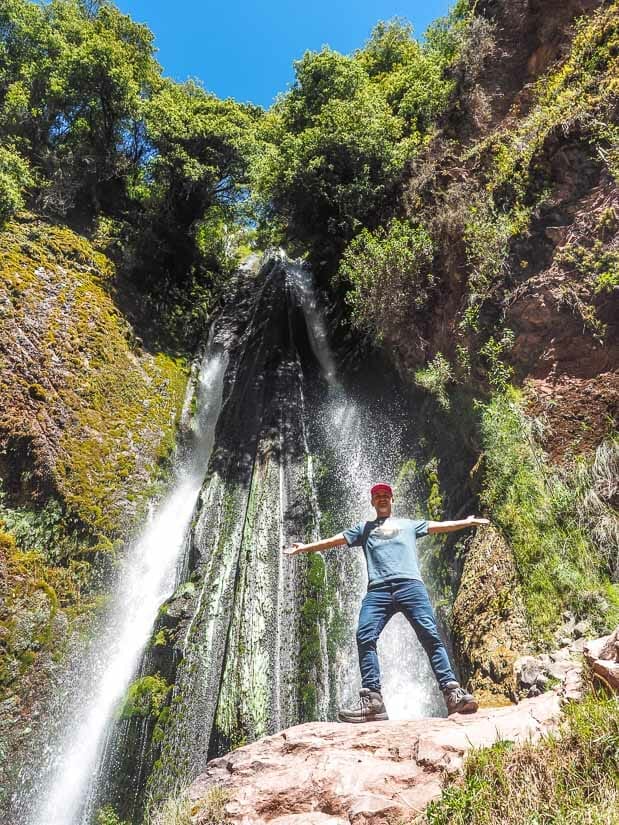
From Chinchero ruins, there is a fun two-hour hike to Catarata Poc Poc, or Poc Poc Waterfall. The trail descends down, down, down through the forest, finally reaching a valley with epic views looking down to where it meets the Sacred Valley.
The trail then veers up-valley to this impressive waterfall. There’s an entrance fee of 5 soles.
The return journey is the hard part, as you’ll be trekking uphill all the way back to Chinchero.
Stay at Mountain View Maras
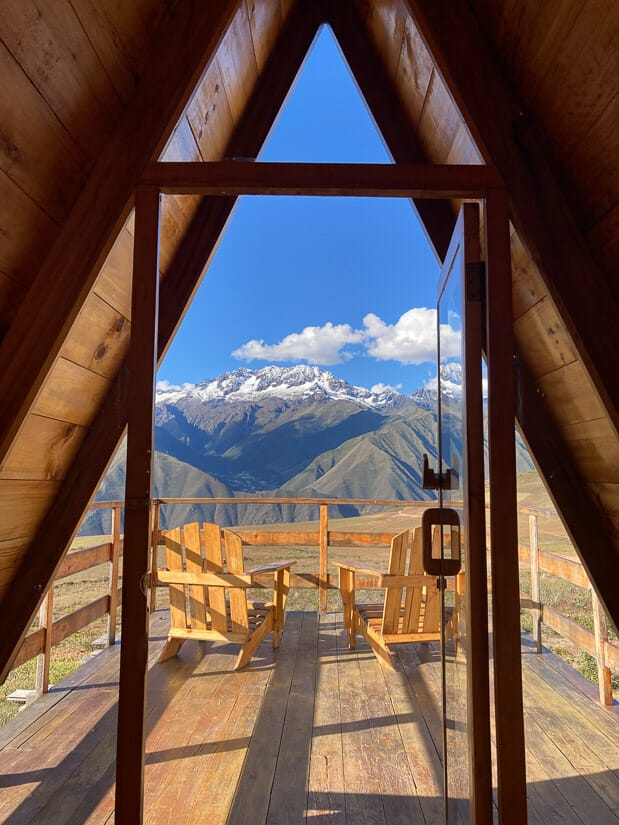
My single best stay in Peru was at Mountain View Maras. This remote accommodation in the Maras region comes with epic mountain views, resident llamas, A-frame cabins (the better ones have hot tubs!), and an excellent bar and restaurant.
The accommodation is between Moray ruins and Maras Salt Mines (see next two entries). When I stayed there, I trekked in from the Chinchero-to-Urubamba highway, and trekked out to Urubamba via Maras Salt Mines and Tunupa Restaurant (see third entries below). Most people arrange a private taxi to get there – I recommend Taxidatum for this.
Walk around the Concentric Moray Ruins
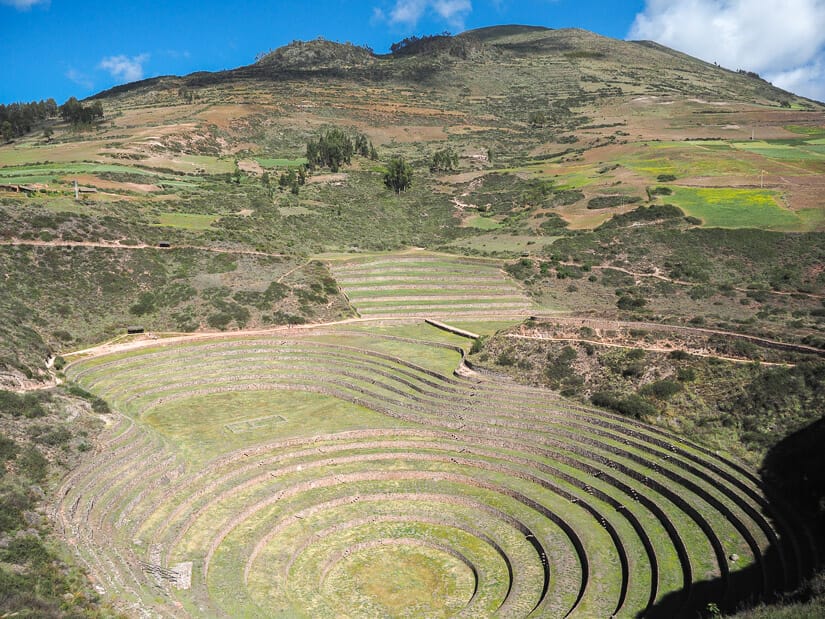
Moray ruins are one of the most unique Inca ruins in the Cusco region. There, rows of concentric terraces fill depressions in the ground up to 30 meters deep.
The Incas used them for agricultural experimentation, as there’s a large temperature difference between the upper and lower terraces. Thus, they could grow crops there that otherwise could not be grown at such altitudes.
Moray is included on the Boleto Turistico. Sacred Valley tours like this one stop at Moray. Riding quads (ATVs) is also popular in the area.
Admire Maras Salt Mines
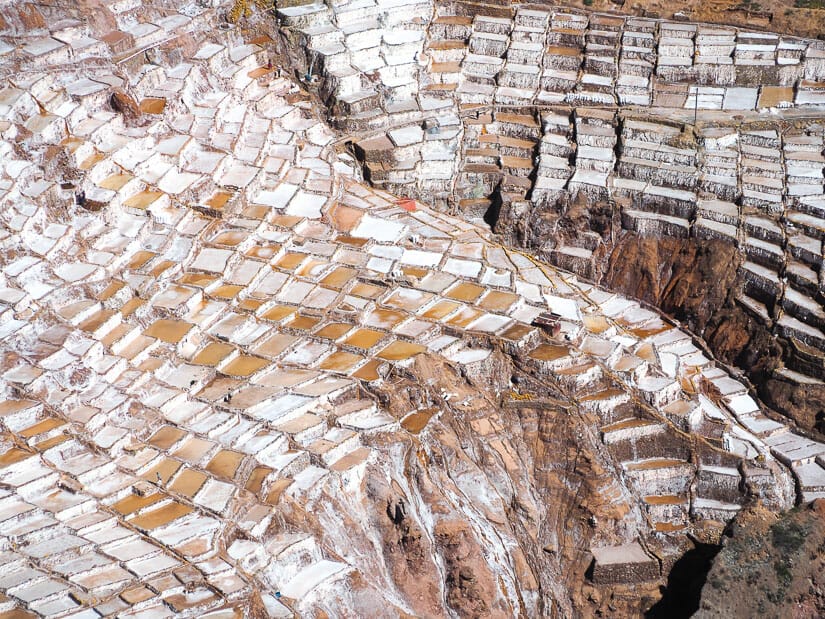
The Maras Salt Mines, or Salineras de Maras, is one of the most impressive sights in the Sacred Valley. These salt terraces were first constructed by the Incas, making use of a natural saltwater spring at the top of the valley.
The salt mines are still used today, with each one managed by a local family. It’s no longer possible for tourists to walk around them, but you can enjoy impressive views from the side.
If you hike down from Moray (3 hours) or Mountain View Maras (one hour) like I did, you’ll get even better views of the mines before getting there, and same thing if you continue walking from the mines down to Urubamba (1 hour).
Most tours that stop at Moray naturally include the Salt Mines because they are nearby. The Salt Mines are not included on the Boleto Turistico, so you’ll need to pay 10 soles to enter.
Gorge on an Andean Buffet at Tunupa
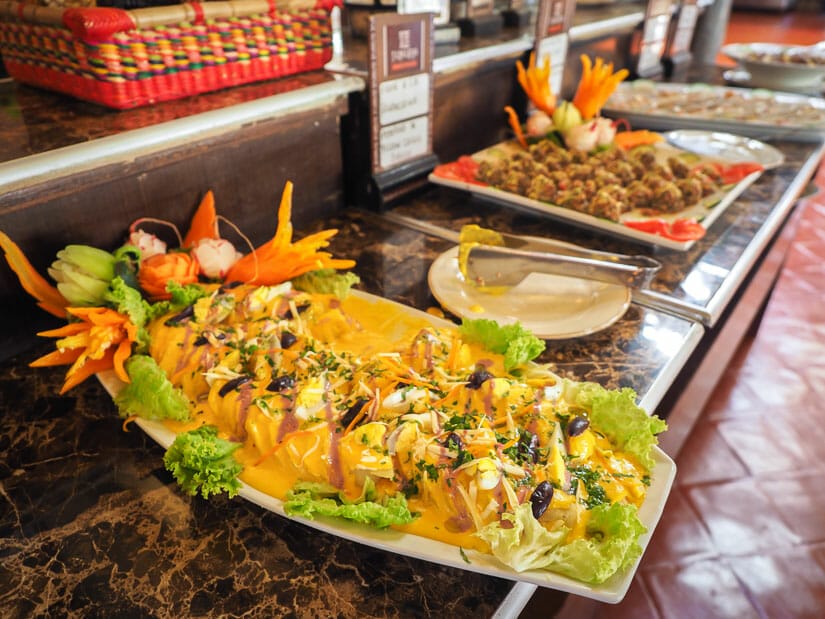
If you’d like to try many local dishes in a single meal, then I recommend the buffet at Restaurante Tunupa just west of Urubamba.
The large spread here includes dishes like alpaca stew, ceviche, Andean potato soup, potatoes with spicy cheese sauce, purple corn pudding, tree tomato confiture, vegetarian sushi, and more. The buffet costs 65 soles per person plus drinks. It is in a beautiful colonial mansion. The restaurant is a tourist magnet, but good nonetheless.
I visited Tunupa restaurant on my hike from Mountain View Maras and Maras Salt Mines to Urubamba. You could also make a lunch stop there when touring the Sacred Valley.
See where the Magic Happens at Sacred Valley Brewery
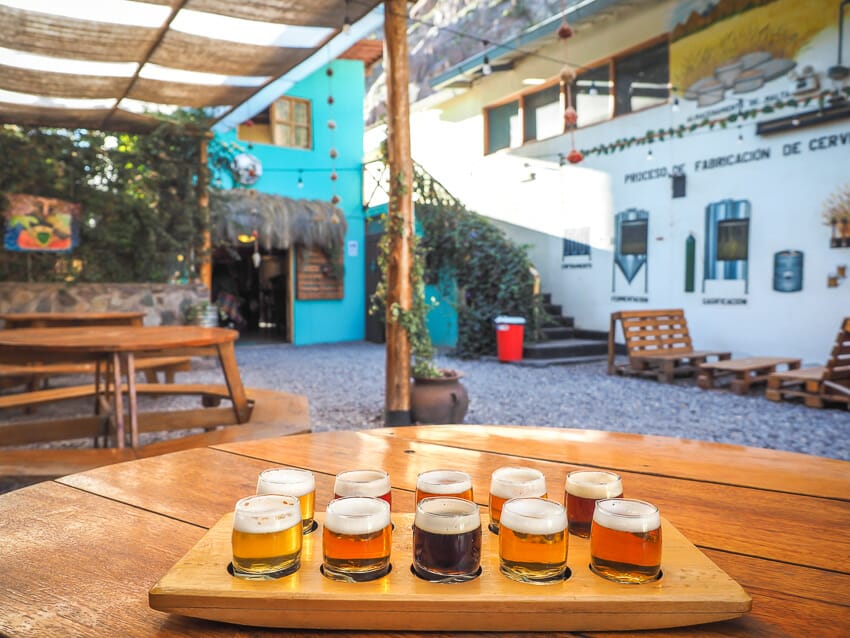
Sacred Valley Brewery (Cerveceria del Valle Sagrado) is the most famous craft brewery in the Sacred Valley. You’ll see their beers in almost every bar and restaurant, but they also have taprooms in Lima, Cusco, and Pisac (the one in Ollantaytambo is currently closed).
The actually brewery is at their location in Pachar, a tiny village between Urubamba and Ollantaytambo. This location has a large outdoor lawn with picnic tables, and inside you can sip delicious suds while gazing into the actual beermaking facility.
The best way to get there is by hoping on any Cusco or Urubamba-bound colectivo from Ollantaytambo and get off in Pachar (10 minutes).
You can also walk from Ollantaytambo to the brewery as a half-day trip, which I highly recommend. To do this from Ollantay, cross Puente Inca to the south side of the river and follow it east for one hour. It’s a lovely walk through a rural area, with the remote Chocana ruins on the way.
Approaching Pachar, you can make a one-hour detour to Ñaupa Iglesia (see next entry), then hit the brewery before catching a colectivo back to Ollantaytambo.
Meditate in Ñaupa Iglesia Ruins
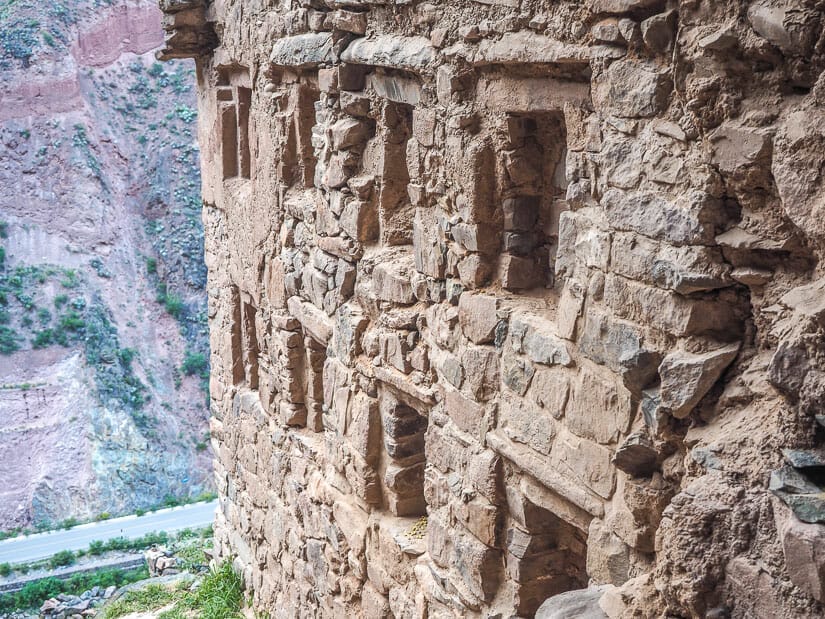
Ñaupa Iglesia is a very small and remote ruin in a cave. It is in the valley wall on the highway between Pachar and Cusco.
The ruin consists of a wall with niches sticking out from a cave, an interesting carved rock in the cave’s entrance, and more carved niches inside. It’s a solitary, spiritual setting with an incredible view.
From Pachar, you can walk up the highway or train line (yep, the train line to Machu Picchu) to reach the ruin in about 30 minutes, with a very steep final ascent.
Test Your Bravery at Skylodge Adventure Suites
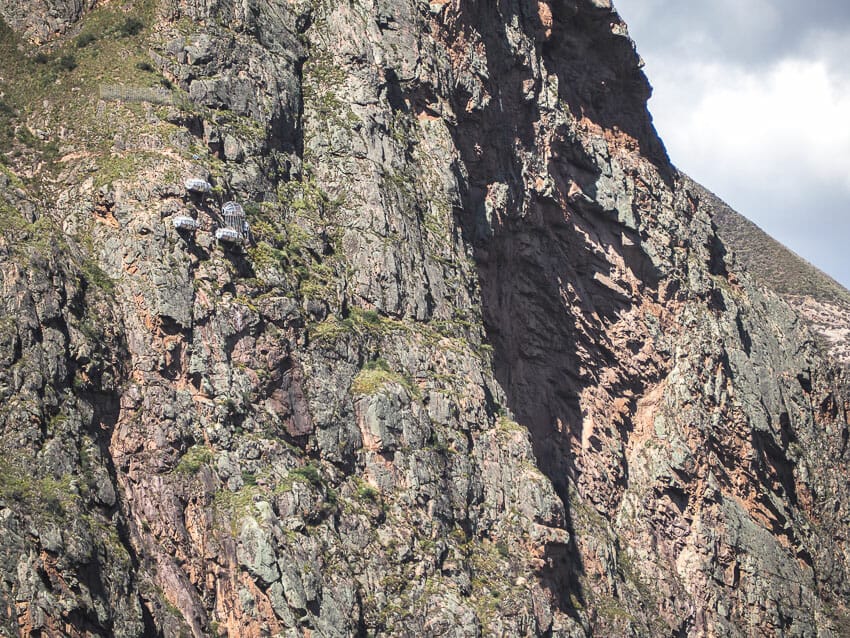
When traveling through the Sacred Valley, you might notice some glistening pods hanging from the cliffs high up on the north side of the Urubamba River. That would be Skylodge Adventure Suites (see on Booking / Agoda / TripAdvisor).
Staying in one of these pods requires some serious nerve, a steep climb up, and enough endurance to make it through a night in the glass-walled pod before returning to flat ground.
While Skylodge is the most famous one, other similar ones have popped up. Starlodge Adventure Suites (see on Booking / Agoda / TripAdvisor), which comes with a wooden hot tub with a view, is just east of Skylodge.
Vertical Sky Luxury Suites (see on Booking / Agoda / TripAdvisor) and Stardome Lodge (see on Booking / Agoda / TripAdvisor) are west of Ollantaytambo. Both have domes and aren’t quite as scary.
Explore Ollantaytambo’s Living Inca Town

Ollantaytambo, my favorite town in the Sacred Valley, is the closest thing in existence to a living Inca village. Qosqo Ayllu, the old section of town just north of the main plaza, has original Inca lanes, canals, and courtyard communities.
When in town, I highly recommend staying at Kamma Guesthouse, which is in one of these lanes.
I spent four full days exploring the main things to do in Ollantaytambo and around it. I easily could have stayed longer.
Visit Ollantaytambo Ruins
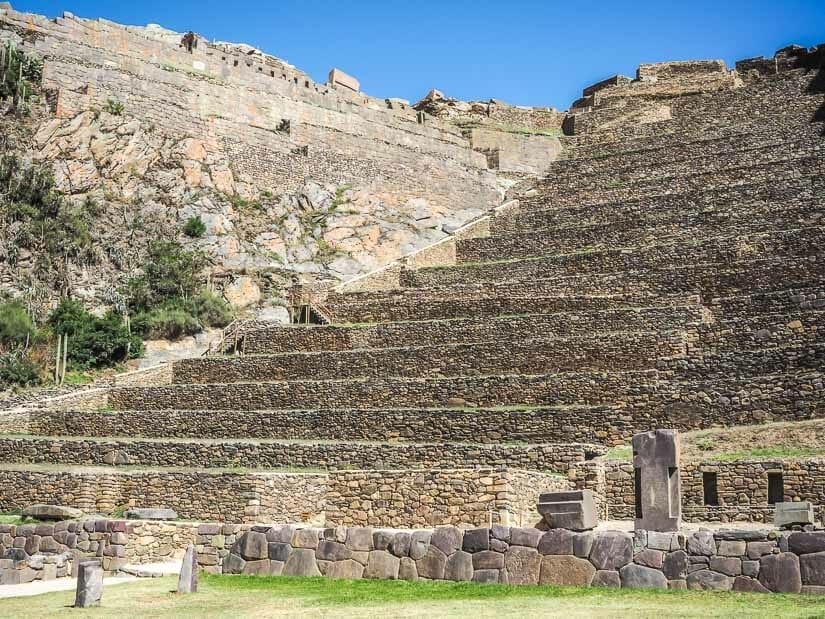
The main attraction in Ollantaytambo archaeological site. The ruins are right beside town and easily reached on foot.
These ruins are second in importance only to Machu Picchu. It was here that the Incas staged their only successful defeat of Spanish troops. The ruins include an intimidating wall of terraces, a Sun Temple, colcas (storehouses), and lovely water fountains. See my detailed guide to visiting the Ollantaytambo ruins.
Ollantaytambo ruins are included on almost every Sacred Valley tour, but I urge you to stay in town longer. Visit the ruins early (open from 7 AM) to beat the tourist masses!
Climb Up to Pinkuylluna Ruins
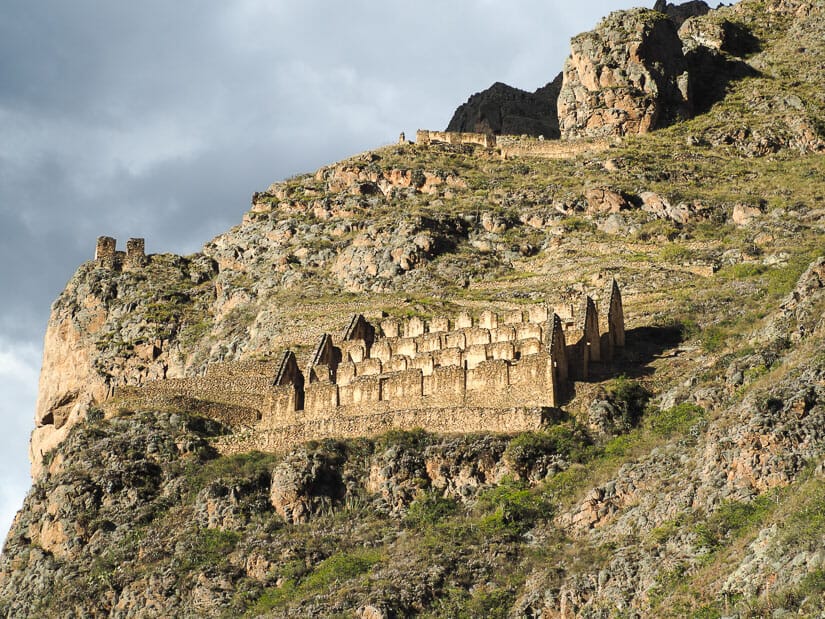
There is another set of ruins visible from almost everywhere in Ollantaytambo. Pinkuylluna Ruins cling to the valley wall opposite Ollantaytambo ruins.
These ruins consist of a set of picturesque colcas (Inca storehouses for grains). You can reach them on a short (30-minute) but steep hike up from Qosqo Ayllu, directly opposite Kamma Guesthouse.
The ruins are free to enter, and you can visit some other ruins on the same mountain (visible and easy to find) before heading back down. The view looking across the city to Ollantaytambo ruins, especially in the morning as the sun lights them up, is phenomenal.
Stroll Past the Traditional Entrance to Ollantaytambo
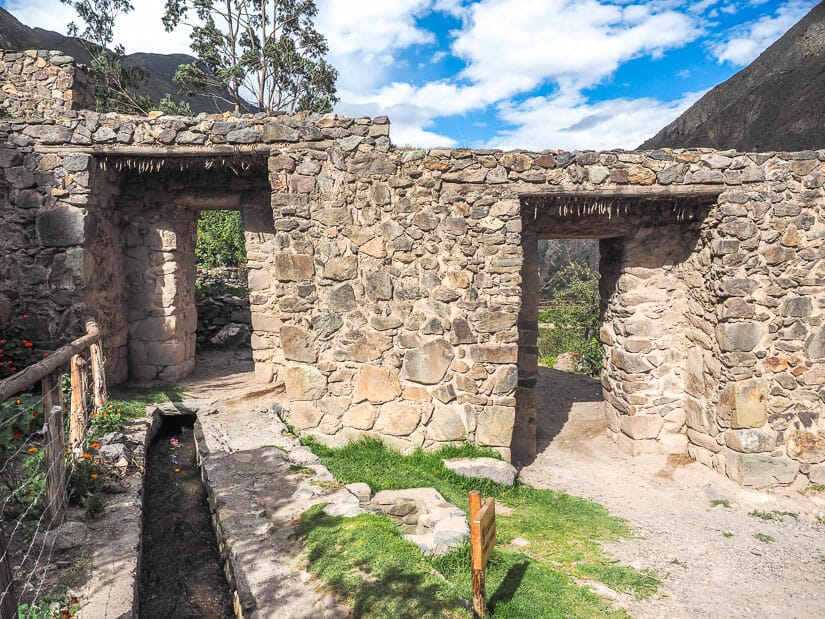
One of my favorite easy walks around Ollantaytambo was from Punku Punku, the double entrance doorway at the edge of town, to Inkapintay Ruins.
Punku Punku was the original Inca entrance to the town. You can even spot it from the bus/colectivo right as you’re arriving in town.
The short, easy walk from there to Inkapintay has lovely views looking down on farms and the Urubamba River. It’s so peaceful despite being right beside town.
See my Ollantaytambo guide for even more walks to free ruins around town.
Watch Machu Picchu Trains Go by at El Albergue

Of the many excellent restaurants in Ollantaytambo, this one is the most famous. El Albergue is right inside Ollantaytambo train station.
You can get a window spot to watch Machu Picchu trains going by and really feel like you are en route to the New World Wonder. The restaurant is atmospheric and romantic.
The menu mostly consists of ingredients from the garden at the adjacent hotel of the same name. Sacred Valley beers are on tap, and the cocktails are made with Caña Alta, a local liquor produced in the hotel’s distillery, Destilería Andina.
The hotel also manages the newer Chuncho restaurant, with the same cocktails, on the main plaza in Ollantaytambo. The plaza and most of the town are a 15-minute uphill walk from the train station.
Hike to the Inti Punku Sun Gate
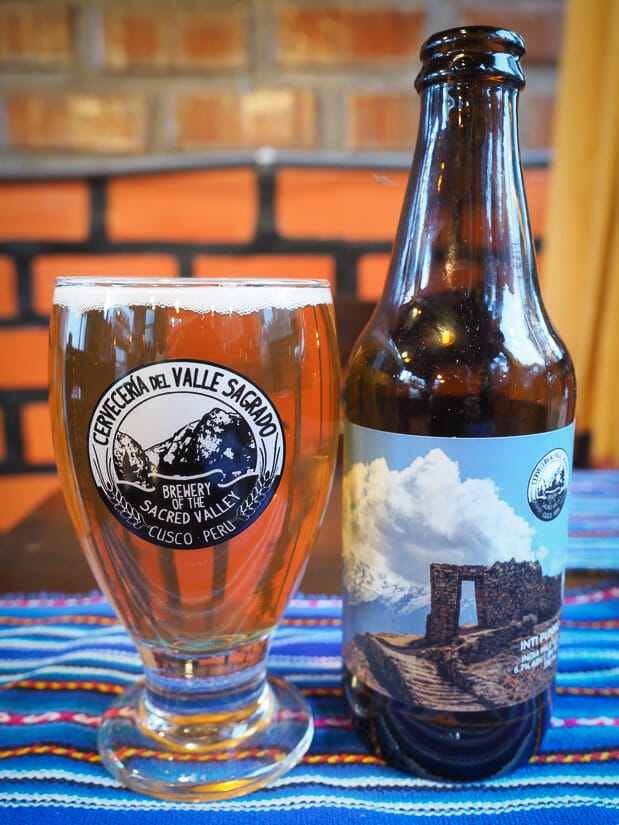
One of the most iconic but difficult to reach ruins around Ollantaytambo is the Inti Punku, or Sun Gate. This is not to be confused with the more famous Sun Gate on the Inca Trail, where trekkers take in their first glimpse of Machu Picchu.
Ollantaytambo’s Sun Gate can only be reached by a tough, full-day hike from town. The most recognizable part is the staircase leading up to a stone door which perfectly frames the sacred Mount Veronika. You can see a picture of it on Sacred Valley Brewery’s IPA beer named after it.
The hike starts from Puente Inca (Inca Bridge) on the south side of town. There are some Inca stone quarries along the way to the ruins.
Visit Remote Pumamarka Ruins
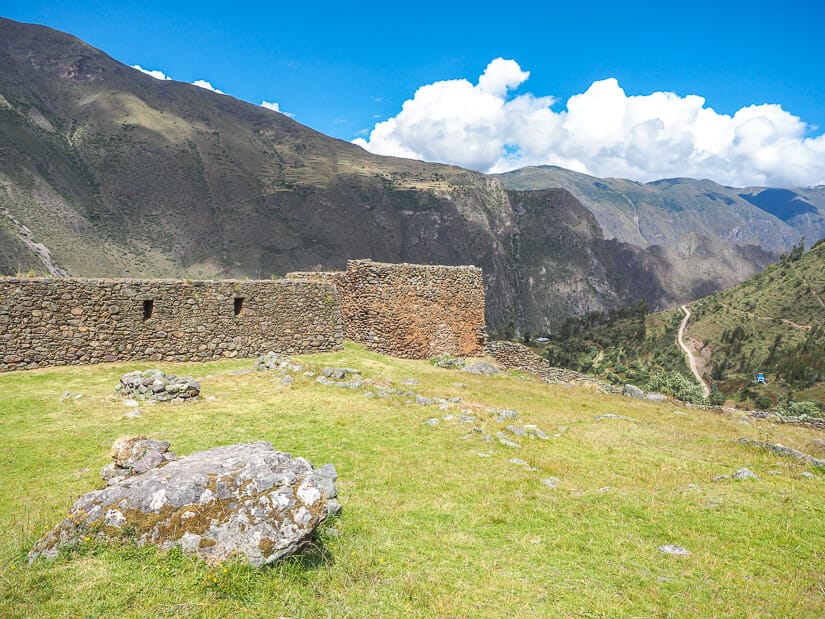
Pumamarka is another remote ruin in a smaller valley connecting to the Sacred Valley from. The fort protected this northern entrance to the Sacred Valley.
Besides the awesome views, this ruin is famous for its resident alpacas, as local farmers often let their animals in to graze around the ruins.
To reach the ruins, you can catch a colectivo from Ollantaytambo, hike for about an hour, and then hike back to Ollantaytambo in another two hours. See my Ollantaytambo guide for all the details.
Embark on the Inca Trail to Machu Picchu
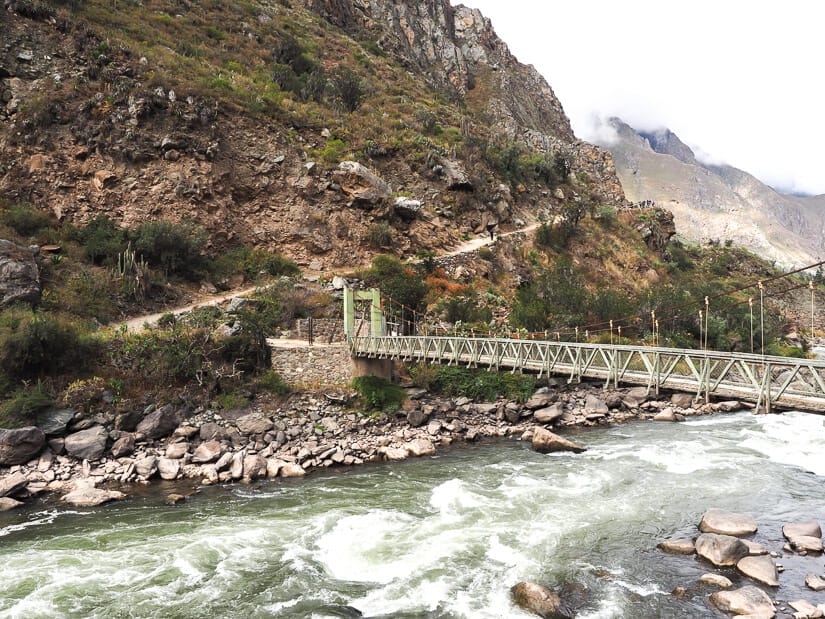
This goes without saying, but the Inca Trail is the Sacred Valley’s most famous hike. The trailhead, called KM 82 or Piscacucho, is a 30-minute drive west of Ollantaytambo along the Urubamba River, or you can take the train there.
The classic Inca Trail is a 4-day hike, but there are also options for 2 days and 5 days. Read all about it in my guide to preparing for the Inca Trail and what you’ll see on the 4-day Inca Trail.
I’ve also got a guide to the new circuits at Machu Picchu, which you’ll need to understand when booking your Inca Trail hike.
Feast and Relax in Aguas Calientes
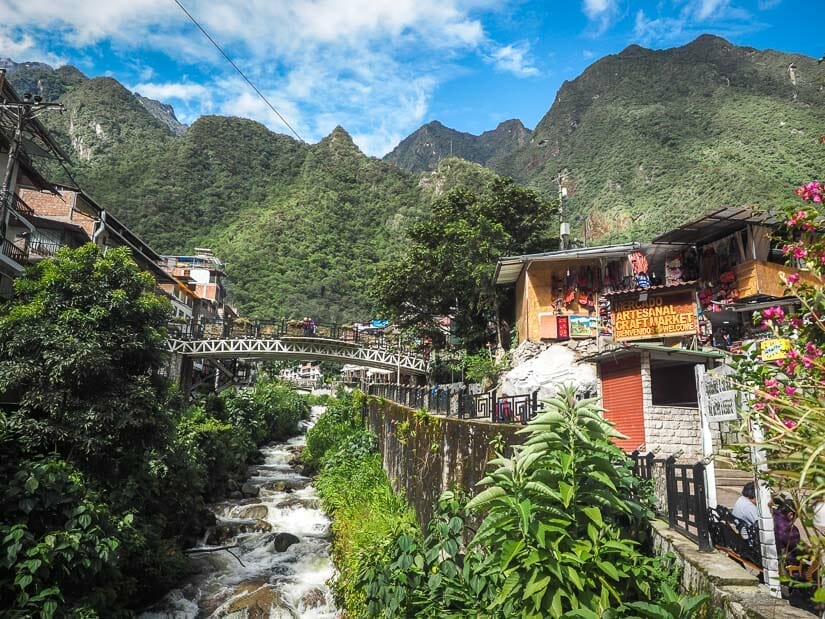
Instead of rushing back to Cusco after your Machu Picchu visit, I recommend spending one or two nights in Aguas Calientes, the tourist village below Machu Picchu. This is considered the westernmost point of the Sacred Valley.
Travelers love to rag on “Machu Picchu Pueblo”, but I actually had a great two nights there. My stay included hiking to two different waterfalls, soaking in thermal hot springs, one of the best showers of my life, and some pretty good food.
Read all about it in my Aguas Calientes things to do guide.
Visit a Unique Butterfly Sanctuary
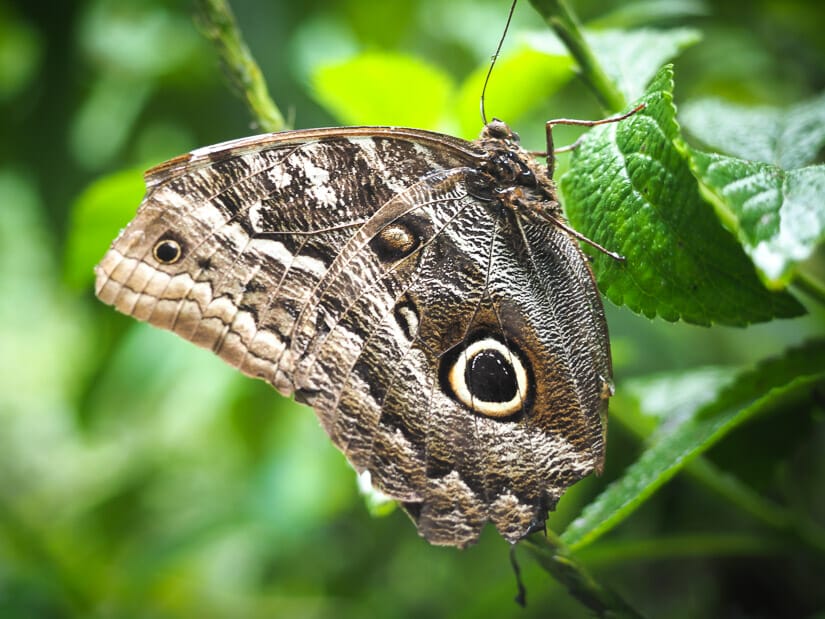
Yet another reason to stay in Aguas Calientes is to visit the excellent Mariposario de Machu Picchu, or Machu Picchu Butterfly Sanctuary.
For 20 soles, I got a private English tour of the sanctuary, including the chance to see living specimens of all the different stages of butterfly. The sanctuary is also a great place for spotting many species of bird.
Mariposario is right at the bottom of the hill going up to Machu Picchu. You can walk there in 20 minutes from Aguas Calientes. Machu Picchu-focused Manuel Chávez Ballón Site Museum is nearby.
More Adventure Activities in the Sacred Valley
Besides all the attractions I’ve covered in this article, there are many adventure activities to be enjoyed in the Sacred Valley.
These include rafting, cycling, ATVing, bungee jumping (highest in Latin America!), ziplining, stand-up paddleboarding, and more!
As you can see, there are a plethora of things to do in the Sacred Valley. I trust you’ve found more than enough ideas here, and I hope I’ve convinced you to spend more than a single day touring this incredible slice of Peru!

